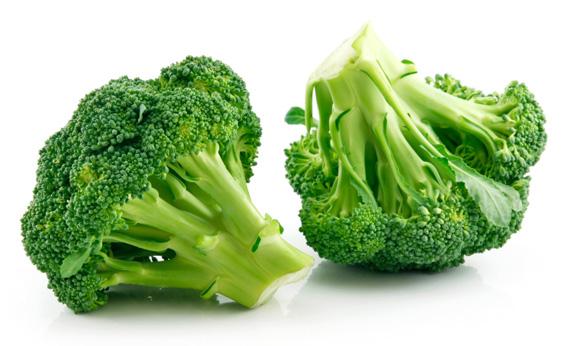Additives are used in food to improve the keeping quality of a food by making it last longer on the shelf or in the fridge, or improve the taste or appearance of processed food. For centuries, ingredients have served useful functions in a variety of foods. Take for instance, our ancestors used salt to preserve meats and fish, added herbs and spices to improve the flavor of foods, preserved fruit with sugar, and pickled cucumbers in a vinegar solution. Today, consumers demand and enjoy a food supply that has flavor, and is nutritious, safe, convenient, colorful and affordable. There are so many food additives that has been spoken of frequently during the course of elaborating on nutrition and diet, for example onions, red bell pepper, spinach and the host of them.
That being said, while cooking, we have certain food additives we call ingredients that helps with the sweetness, color, flavor and spiciness of the meal. But we may not be aware that cooking can often remove the nutrients from food. You want to eat right, so you prepare healthy meals at home. To keep the nutrients in the food, you must handle it properly at every stage of the cooking process. I would love to speak 3 food additive, in other words, ingredients that have nutritional value to an individual. I would also speak on preferable ways of cooking to help retain its nutrient. (This is more of an elaborate and educative health post, so I indulge you to keep reading).
- Garlic: Garlic is an herb. It is best known as a flavoring for food which comes with a lot of health benefits such as boosting the immune system to fight against foreign bodies, it naturally reduces the blood pressure, it beats antibiotics in fighting common illnesses, it detoxifies the body, and it has the ability to fight off cancer. You can increase the health benefits you receive from garlic by letting it sit after you’ve chopped it or crushed it. If you give your chopped/crushed garlic time to sit before changing its temperature while cooking, it will give the alliinase enzymes in garlic an opportunity to work on behalf of your health. I often recommend using raw chopped or pressed garlic in many of our dishes to take advantage of the benefits derived from garlic. However, if you cannot tolerate raw garlic, you can add chopped garlic to foods while they are cooking. It is best to add it towards the end of the cooking process to retain the maximum amount of flavor and nutrition.

- Broccoli: Broccoli can provide you with some special cholesterol-lowering benefits if you will cook it by steaming. The fiber-related components in broccoli do a better job of binding together with bile acids in your digestive tract when they’ve been steamed. When this binding process takes place, it’s easier for bile acids to be excreted, and the result is a lowering of your cholesterol levels. It has a strong, positive impact on our body’s detoxification system, may help us solve our vitamin D deficiency epidemic, and is a particularly rich source of a flavonoid called kaempferol, which has the ability to lessen the impact of allergy-related substances on our body. Overcooked broccoli becomes soft and mushy, an indication that it has lost both nutrients and flavor. Begin by cutting broccoli florets into quarters and let sit for several minutes before cooking to enhance its health-promoting benefits. Steam for 5 minutes.

- Basil Leaves: basil leaves are highly fragrant leaves used as a seasoning herb for a variety of foods. Research studies on basil have shown unique health-protecting effects in two basic areas: basil’s flavonoids and volatile oils which provide protection at the cellular level and provide protection against unwanted bacterial growth. It has an enzyme-inhibiting effect of which qualifies basil as an “anti-inflammatory” agent that can provide important healing benefits along with symptomatic relief for individuals with inflammatory health problems like rheumatoid arthritis or inflammatory bowel conditions. Basil is a very good source of vitamin A (through its concentration of carotenoids such as beta-carotene), magnesium which promotes cardiovascular health by prompting muscles and blood vessels to relax, thus improving blood flow and lessening the risk of irregular heart rhythms or a spasm of the heart muscle or a blood vessel, and also a good source of vitamin K, C, manganese and copper. For storage, Fresh basil should be stored in the refrigerator wrapped in a slightly damp paper towel. It may also be frozen, either whole or chopped, in airtight containers. Alternatively, you can freeze the basil in ice cube trays covered with either water or stock that can be added when preparing soups or stews. Dried basil should be kept in a tightly sealed glass container in a cool, dark and dry place where it will keep fresh for about six months. Since the oils in basil are highly volatile, it is best to add the herb near the end of the cooking process, so it will retain its maximum essence and flavor. Combine fresh chopped basil with garlic and olive oil to make a dairy-free variety that can top a variety of dishes including pasta, salmon.

P.S: SECRET USE OF BASIL: Facial Steam for Headache: A facial steam with dried basil leaf can help alleviate a headache. Add a tablespoon of dried basil leaf to 2 cups of boiling water in a large pot. Carefully lean over the pot, cover head with a towel and breathe in the steam for 5-10 minutes until headache starts to subside. Bonus, you get to smell like an Italian restaurant for the rest of the day!
Follow us on:
Twitter: @diet234
Instagram: diet234
By Blessing Nwachukwu | [email protected]
Diet234 Team

One Response